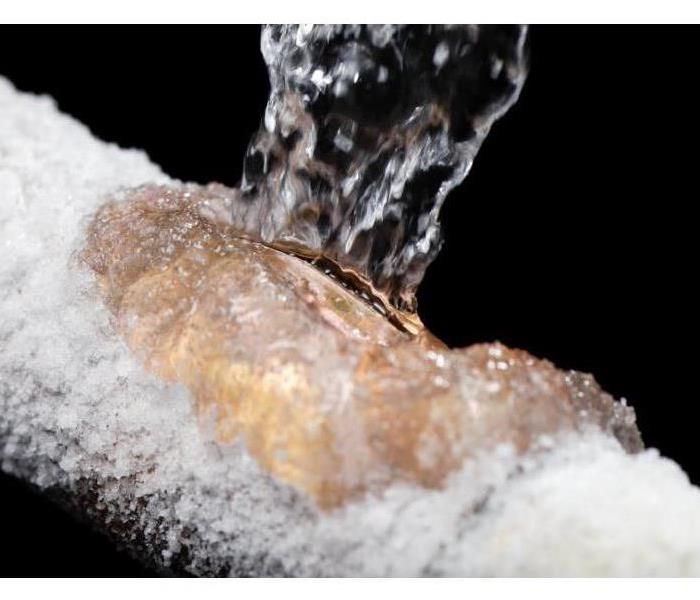5 easy steps to prevent frozen pipes this winter!
1/16/2018 (Permalink)
Summer is over, the first chill is in the air and your garden is wilting due to the early morning frost. As homeowners, there are a few easy, yet critical things we need to do to prevent pipes from freezing once that cold East wind blows through the Magic Valley.
Why you ask? When water freezes it expands, if there is water trapped in your pipes it could cause a burst- Flooding your basement, ruining drywall and costing thousands of dollars in repairs. Frozen water lines that burst are often some of the most expensive and time consuming losses we see in the Magic Valley.
Bottom line, take these precautionary measures in the fall to prevent a catastrophic failure within the plumbing of your home during our cold winter months.
Here are 5 steps everyone can take to help prevent frozen pipes this winter.
Step 1: Drain exposed/ unused lines.
The first thing every homeowner should do is get the water out! Garden hoses and sprinkler lines are one of the most common culprits of burst pipes.
Make sure all outside hoses are detached from the spigot and allow the spigot to drain. If you leave a garden hose attached to the outside water spigot, your chances of having a water damage in the spring increase dramatically. While it is true that most outside water sources are “frost free,” if a hose is connected there is no way for the water to drain and will lead to a burst.
In Idaho, our main water supply line coming into our homes is typically buried 36” or more due to our average frost line being 31”. The same can’t be said for our automatic sprinkler lines. The average depth for sprinkler lines is only six to eight inches, well above our frost line. This means that if your sprinkler lines have not been properly drained, there is an overwhelming chance that the lines will freeze.
It is best to have a professional come and blow out your automatic sprinkler lines every fall. While most of us have an air compressor at home, few of us have one with the appropriate psi to purge all of the water through the system.
Step 2: Insulate exposed piping
In an ideal situation, all of our homes plumbing would be within the structure and in a heated space. Unfortunately for us as homeowners, this is not always the case. Focus on the unheated areas of your home- attics, crawlspaces and basements. If you have any piping within these spaces, insulated them properly with sleeves wrapping or heat tape. All of these can be purchased at your favorite hardware/home improvement store.
Step 3: Open cabinet doors
When we get into the coldest months of the year, when the temperature rarely gets above the freezing mark, even our indoor plumbing can be subject to freezing. The easiest and most cost effective way to help with this is opening your cabinet doors. I know that none of us want every cabinet in the house open (especially my wife) but, during our cold snaps, the increased airflow will help keep the pipes within the wall above the freezing point.
Step 4: let it drip!
When one of our famous Idaho cold fronts move in and the temperatures plummet, let all of your faucets drip. By just allowing the water to continuously drip, the water inside the pipes is moving, relieving pressure. Therefore not allowing a freeze up to occur.
Step 5: Shut off the water completely
If you’re planning a trip during the winter months, take the extra precaution and turn off the water coming into your home. This ensures that you won’t come home to a new swimming pool where your living room used to be. When the cold water sits unused in your pipes it increases your chance of a frozen pipe. More importantly, if your home was to lose power for a few days while you’re away during sub-zero temperatures, you could come home to an absolute disaster! So, why take the risk? Take the extra precaution and turn your water off while away. The water main shut off is typically found in the basement of your home where the water line enters the structure. If you can’t find it, look in your property records to locate the shutoff valve.






 24/7 Emergency Service
24/7 Emergency Service